Brera Art Gallery: art, history and beauty in Milan
The capital of the Lombardy region, Milan, is a city that breathes ancient history. Despite this fact, it managed to modernize itself flawlessly without losing its essence and mixed the old and the contemporary in a unique way. One of these examples is the beautiful Brera Art Gallery, and we will learn more about it right now in our special post: Brera Art Gallery: art, history, and beauty in Milan. Here at Your Travel to Italy with Ana Patricia you make the trip of your dreams! ALSO: see our “Accommodation in Italy – Tips for your holidays!”
Our Introduction
Milan, capital of Lombardy, is a fantastic city. Known worldwide as the capital of Italian fashion, Milan is also a city that combines the old and the modern in a very harmonious and elegant way, enchanting even the most demanding travellers. It is not a difficult city to visit and offers us a wide range of must-see attractions. But, today, I’m going to talk about one of the most beautiful attractions in the city: the wonderful Pinacoteca di Brera (Brera Art Gallery).
A little about the Brera Art Gallery
Located in the heart of Milan, at Palazzo Brera, the Pinacoteca di Brera is an icon of the city and houses incredible works of art from different periods and artists. Also read What are the top ten places to visit in Milan?
Let’s talk about history…
The Pinacoteca di Brera was officially founded in 1809, but it has existed since 1776, the year in which the building received its first exhibition. Since the end of the 1700s, the Pinacoteca was already in the process of expansion, right next to the Academy of Fine Arts, and was commissioned by Maria Teresa of Austria.
However, the main person responsible for the prestige of the Pinacoteca was Napoleon. He was responsible for transforming the place into a museum and, there, exhibiting several paintings from the territories conquered by the French.
One of the first…
Over the years, it became an internationally recognized museum and became very famous for being one of the first in the new Kingdom of Italy. The beautiful Palazzo Brera, which houses the Pinacoteca, is a beautiful building whose present appearance is a result of interventions by the architects Francesco Maria Ricchini and Giuseppe Piermarini.
The Collections
The collections present in the museum are mostly commissioned by Napoleon, but there are also several works donated from noble families’ heirlooms, private collections, and acquisitions of works by students and masters of the Academy, with which the museum shares the curatorship. Also read The Best Bars With Panoramic Views In Milan.
In the same palace, you will also find the National Library of Braidense, the Astronomical Observatory, and the Botanical Garden, in addition to the Lombardo Institute of Sciences and Letters and the highly respected Academy of Fine Arts. That is, visit the place with time, as the attractions grouped there are incredible.
Fun Fact:
The name Pinacoteca means “gallery of paintings” in Greek. The word originates from the union of two Greeks: πίναξ (pinax, which means “image“) and θήκη (théke, which means “coffin“, “closet“). Ancient sources also relate the word Pinacoteca as “place of display of religious tablets
What to see at the Pinacoteca di Brera?
Even if you only visit Palazzo Brera, know that you’ll already be in front of a work of art. The building is full of splendid beauty and presents us with impeccable architecture full of charm and sophistication without losing its attractive simplicity.
In the central courtyard of the palace, we can see a statue that doesn’t accurately portray the figure present there; however, it marks the “owner” of the place: Napoleon with the mantle of the peacemaker Mars. This sculpture was made by Canova and is of unique beauty.
The art gallery is presented in 38 rooms and all of them are a succession of masterpieces by Italian and foreign artists. The works date from the 14th to the 19th century and, among the most famous paintings – the ones that give us the feeling of “I’ve seen this before!” – Are: “The Marriage of the Virgin”, by Raphael; “Lamentation of Christ ” by Mantegna; “Supper at Emmaus”, by Caravaggio, and the magnanimous work “The Kiss”, by Hayez.
There are also several other important works by artists such as Bramante, Giovanni Bellini, Gentile da Fabriano, Tintoretto, Canaletto, Lorenzo Lotto, Piero della Francesca, Mattia Preti, Umberto Boccioni, Picasso and Georges Braque. In other words, there are works for all tastes. But there’s a profusion of famous works and artists.
Room 1
In room 1 you will find Lombard frescoes from the 15th and 16th centuries by Bramante and Luini; room 1 also houses room 1A, where the Chapel of Mocchirolo (XIV) is located.
Room 2, 3 and 4
In rooms 2, 3 and 4, you will find Italian paintings from the 13th to the 15th century, by Giovanni da Milano, Andrea di Bartolo, Gentille da Fabriano and Stefano di Verona.
Room 5 and 6
Rooms 5 and 6 house several Venetian paintings from the 14th to the 16th century; the works here are by Bellini, Carpaccio, Mantegna and Vivarini.
Room 7
In room 7 you can admire 15th century Italian paintings, predominantly paintings by Bellini and Mantegna.
Room 8
Room 8 is home to other 15th-century Venetian paintings by Giovanni, Gentile Bellini, Vivarini, Cima da Conegliano and Montagna.
Room 9
Room 9 also houses Venetian paintings from the 16th century by Tiziano, Veronese and Tintoretto.
Room 10
In room 10 we find the Jesi Collection, with 20th century paintings and sculptures by artists such as Boccioni, Carrà, De Pisis, Modigliani, Marino Marini, Medardo Rosso and Morandi.
Room 11
Room 11 presents the Vital Legacy with Egyptian and Romanesque art and works by Morandi and Modigliani.
Room 12 and 13
Rooms 12 and 13 house the Saint Joseph Chapel and the paintings of Santa Maria da Paz made by Luini and Marco d’Oggiono.
Room 14
In room 14 we find more Venetian paintings from the 16th century. The artists featured here are Bonifacio Veronese, Savoldo, Moroni, Lotto and Bordon.
Room 15
Room 15 houses Lombard paintings and frescoes from the 15th and 16th centuries. The artists who sign the works in this room are Foppa, Bramantino, Marco d’Oggiono and Gaudenzio Ferrari.
Room 18
In room 18 we can also see several Lombard paintings from the 16th century by Campi, Altobello Melone and Lomazzo.
Room 19
Room 19 displays sacred paintings and Lombard portraits made between the 15th and 16th centuries. Here we find works by Bergognome, Cesare da Sesto, Luini and Solario.
Room 20
In room 20 there are paintings from Emilia-Romagna and Ferrara, all from the 15th century, signed by Costa, Cosmè Tura and Francesco del Cossa.
Room 21
Room 21 is the room that houses the 15th-century Polípticos de Marche by Giovanni Angelo d’Antonio, l’Alunno, Carlo Crivelli and Signorelli.
Room 22 and 23
In rooms 22 and 23 there are more paintings from Emilia-Romagna and Ferrara, all from the 15th and 16th centuries and by Ercole De Roberti, Garofalo, Dosso Dossi, Ortolano and Coreggio.
Room 24
Room 24 features 15th-century Urbino paintings by Piero della Francesca, Rafaello and Bramante.
Room 27
In room 27 are the paintings of central Italy from the 15th and 16th centuries by Genga, Bronzino and Viti.
Room 28
In room 28, there are paintings of central Italy from the 17th century by Caracci, Reni, Guercino and Barocci.
Room 29
In room 29 we find works by Caravaggio and his school; the works were done by Caravaggio himself in addition to Gentileschi and Battistello.
Room 30
In room 30 there are 17th century Lombard paintings by G.C.Procaccini, Cerano, Morazzone and Cairo.
Room 31
Room 31 houses 17th-century Flemish and Italian paintings. The artists present there are Rubens, Van Dyck, Jordaens, Pietro da Cortona and Strozzi.
Room 32 and 33
In rooms 32 and 33 we find other Flemish and Dutch paintings from the 15th and 17th centuries by Jan de Beer, Rembrandt and Bruegel.
Room 34
Room 34 is dedicated to 18th-century sacred paintings by Tiepolo, Subleyras, Batoni and Crespi.
Room 35
In room 35 there are more 18th century Venetian paintings by Piazzetta, Canaletto, Longhi and Bellotto.
Room 36
Room 36 presents us with Italian portraits and 18th century paintings by Crespi, Ceruti and Fra Galgario.
Room 37 and 38
Finally, in rooms 37 and 38, there are 19th century Italian paintings by Appiani, Hayez, Fattori and Pelliza da Volpedo.
Rooms not mentioned
- The rooms not mentioned are rooms reserved for temporary exhibitions and/or events.
:: A special thanks to the blog O Guia de Milão, responsible for the detailed descriptions of the rooms at the Pinacoteca di Brera. ::
Good to know…
The works undergo constant maintenance, and it may happen that on the day of your visit one or more works are not on display, but don’t worry! Even if you don’t see them where they are supposed to be, you can see them through the glass of the laboratory, where restorers work in front of the public. A few days a week, it’s possible to see the entire process of cleaning and care of all the works in the Pinacoteca and it’s a very interesting procedure.
Visiting Hours
The Pinacoteca offers us excellent visiting hours: it’s open from Tuesday to Sunday, from 8:30 a.m. to 7:15 p.m. On the third Thursday of the month, it’s open until 10:15 p.m. The days on which the Pinacoteca is closed are: Mondays, January 1st, May 1st, and December 25th. Also read: What Works During Holidays In Italy?
Attention
- Changes in opening hours and days may occur without prior notice. Before visiting the museum, please confirm the opening and closing times on their official website.
How much time do I need to visit the Pinacoteca?
It depends! The visit can last from 1 to 3 hours, and the period depends on your interests and the time you want to dedicate to each work.
Golden Tip
- Take a guided tour! A guided tour offers you the chance to truly immerse yourself in the history of art and in the incredible details of the various works on display at the museum! It’s really worth it and you’ll receive a real art class!
How to get there and where is it?
Super well located, the Pinacoteca is at Via Brera, 28. The place is easily accessible and you can go there walking, by bus, tram or subway.
If you take the metro, you can use the following stations: M2-Lanza, at the M3-Montenapoleone station or at the M1-Parada Cairoli station.
If you go by bus, you can use bus number 61 or 57.
By tram you can use the following numbers: 1, 2, 12, 14 and 4.
You can also take a walk from Piazza Duomo: the walk takes about 15 minutes and is a very easy walk since it is completely smooth.
How much?
The ticket costs 15 euros; the half price is 10 euros. The audio guide costs 2 euros and is available in English and Italian. Children under 18 and people with disabilities* do not pay admission. Over 65s, on Tuesday and Wednesday, pay only 1 euro. To check all the rates and specifications about the ticket price, you can access the official website of the Pinacoteca by clicking HERE!
*Gratuity for people with disabilities is valid for Italian citizens according to Law 104. For foreign visitors, an equivalent certification proving the disability is required. If the person with a disability needs to be accompanied, the accompanying person can also enter for free. Also read: Where to eat in Milan?
Watch this video and discover where to sleep in the center of Milan!
Subscribe to our channel and receive more videos with information and tips about Italy. Don’t forget to give this video a thumbs up! 😉
TRAVEL TO ROME!
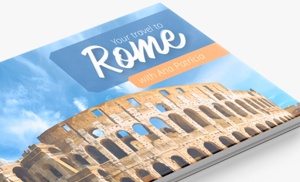
“Your Travel to Rome” is the quintessential e-book for your travel to one of the finest tourist destinations on the planet!
LEARN MORE
Conclusion
Brera Art Gallery: art, history and beauty in Milan! The Pinacoteca di Brera is a true journey into the world of art. Not to mention its excellent location and the impressive beauty of the building that houses it.
Are you insecure?
And if you feel insecure, have no time, and need help organizing your trip, don’t hesitate to contact me! I’d love to help you make your dream trip to Italy come true. And how can I do that? Keep reading this post until the end, and you’ll find out how we can make your life and your trip much easier.
Did my post help you? If so, be sure to post your comment below, but if you still have questions, just send me a message, and I’ll gladly answer you as soon as possible!
An Extra Help for your Trip
The best content from Your Travel to Italy!
Learn more about our tours in Italy right now!
- What to visit in Italy in 10 days?
- The ten must-see places in Tuscany?
- The best tips to save on your trip to Italy?
- What are the 10 most visited cities in southern Italy?
- Airports in Italy? How to get to your hotel? (Venice, Milan, Rome, Florence)
- What to do in 1/2/3/4 days in the main Italian cities?
- The best tips on food in Italy (wines, typical food, enogastronomy tours)
- How to get from Fiumicino Airport to Rome downtown?
- Your Travel to Italy: 10 tips for traveling through Italy!
Best regards from Italy

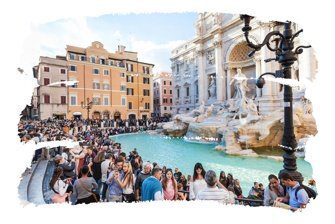
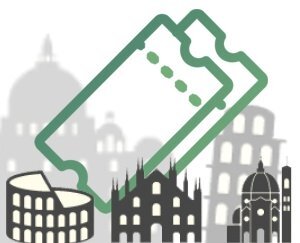
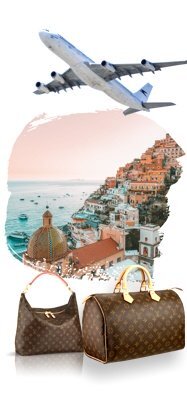
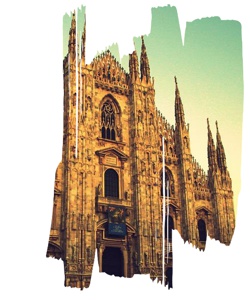 PLACES TO STAY IN MILAN
PLACES TO STAY IN MILAN
 Save money!
Save money!